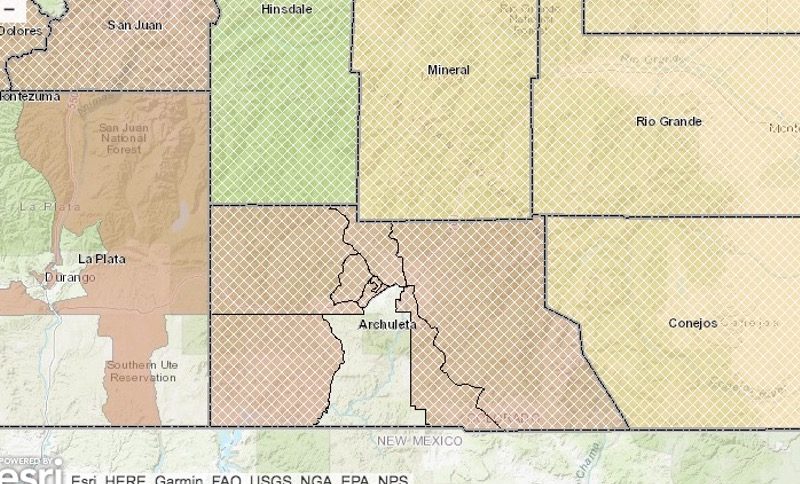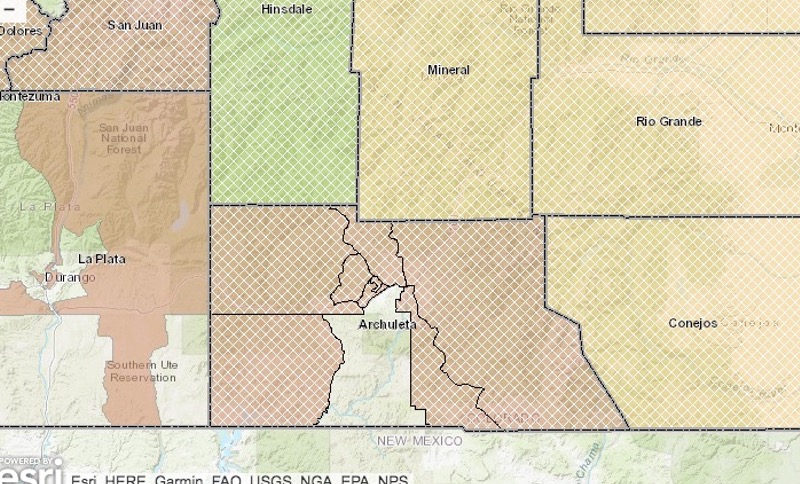Look at them yo-yos, that’s the way you do it. Play the guitar on the MTV.
That ain’t working, that’s the way you do it. Money for nothing, chicks for free…
— ‘Money for Nothing’ by Mark Knofler & Gordon Sumner
We briefly discussed, yesterday, the Colorado tax subsidy mechanism known as ‘Enterprise Zones.’ The basic idea behind these incentives, according to the Colorado Office of Economic Development and International Trade, is to create economic vitality in “distressed areas.”
From the OEDIT website:
The Colorado Enterprise Zone (EZ) Program is designed to promote a business-friendly environment in economically distressed areas by offering state income tax credits that incentivize businesses to locate and develop in, and non-profit organizations to assist with the needs of, these communities.
Private-sector business activity encouraged by these income tax incentives brings job opportunities and capital investment to economically distressed areas. The private investment results in tax revenue for school districts, cities, counties and the state, outweighing the costs of the tax credits granted…
If you look at the OEDIT map of Enterprise Zones, it appears that most of Archuleta County qualifies as a “distressed area”. Only the area directly south of the Piedra Road-North Pagosa Boulevard area, and roughly between Eight Mile Mesa and Cat Creek Road, lies outside the “distressed” zone.

You can also see that the surrounding counties are also generally designated as EZ areas. If you check out the map of Colorado on the OEDIT website, you see that nearly the entire state of Colorado is designated as “distressed.” If you’re a company looking for EZ tax breaks, you can locate almost anywhere and get the benefits. Almost anywhere. (Curiously, you cannot get EZ tax credits when investing in a marijuana business. Go figure.)
Regarding the Enterprise Zone program in Colorado, the Leeds School of Business has written:
Given the pervasiveness of enterprise zones and similar tax incentives across the nation (present in 39 states and Washington D.C.), it is imperative that Colorado maintain incentives in order to compete with other incentive‐rich states for business acquisition or retention…
Translation: Colorado has created its Enterprise Zone program, not because these programs are particularly effective or innovative, but because 39 other states have similar programs, and someone thought our Colorado businesses “needed” these tax credits in order to compete with businesses in those other states.
From what I can tell, the 3% “Investment Tax Credit” — which grants a tax break to businesses when they buy new business equipment to be used exclusively within an Enterprise Zone — is the most popular “Enterprise Zone” tax credit in Colorado. That credit can be worth up to 3% of equipment purchases. As a business owner myself, I can appreciate tax credits — in theory. I bought a new $1,200 computer this year, so apparently I could have received a $36 tax credit, if I’d bothered to apply as a qualifying business. How stupid of me.
But, while I can’t speak for anyone else who has started a small business in Pagosa Springs, or who has relocated a small business to Pagosa Springs, I would be willing to bet my theoretical $36 that anyone who does locate a businesses in Archuleta County — and gives up all the economic advantages of a Big City Business Location like Denver or Colorado Springs — is not doing it for the tax credits. They are doing it for the non-financial benefits of small town living.
Now, a big corporation like Verizon or CenturyLink or Walmart — that’s different. They can wind up with millions of dollars in EZ tax credits, and I strongly suspect they don’t fully appreciate the ‘refreshingly authentic” character of a town like Pagosa Springs. (Curiously enough, our new Walmart store chose to locate in the part of the county that lies outside the EZ area.)
The Enterprise Zone isn’t the only type of incentive available in Colorado. If you own a business, you can get other types of subsidies from our state government. There’s something for everyone!
From the OEDIT website:
As a business looking to expand or relocate in Colorado, we want you to get the most out of what our state has to offer. In addition to a colorful backdrop and an energetic workforce, we’ve also got a long list of funding resources and credits for eligible companies to access. Browse the list below to see all the programs available to support businesses in growing their economic presence in the state.
- Advanced Industry Tax Credit
- Aviation Development Zone Tax Credit
- Cash Collateral Support – SSBCI
- CDBG – Business Loan Funds
- CDBG-DR – Grant and Loan Fund
- CDBG – Planning & Feasibility Study
- CDBG-DR – Tourism Marketing
- Rural Technical Assistance Program (RTAP)
- Colorado Capital Access – SSBCI
- Colorado Creative Districts
- Colorado Credit Reserve (CRR)
- Colorado FIRST and Existing Industry (CFEI) Job Training Program
- Colorado-Israel R&D Grant
- Colorado Microloans
- Commercial Historic Preservation Tax Credit
- Creative District Community Loan Fund
- Early-Stage Capital and Retention Grant
- Enterprise Zone Tax Credits
- Export Accelerator Program
- Global Consultant Network
- Infrastructure Funding
- Job Growth Incentive Tax Credit
- Procurement Technical Assistance Center (PTAC)
- Proof of Concept Grant
- Regional Tourism Act
- Sales and Use Tax Refunds
- Rural Jump Start
- Space to Create
- State Trade Expansion Program
- Strategic Fund Initiative
- Strategic Fund Incentive
- Transferable Tax Credit program
- Venture Capital Authority Funds
As we noted yesterday, a recent article in The Colorado Sun estimated that the money doled out in business ‘incentives’ in Colorado amounts to around $6.6 billion per year. Reporter Brian Eason referred to the $40 to $80 million in annual Enterprise Zone tax credits as “a drop in the bucket.”
But surely $6.6 billion is an important number? Considering that the entire 2019-2020 budget for the state of Colorado is $32.5 billion?
All its ‘economic incentives’ the state government gives away, mostly to big corporations, amount to approximately 1/5 of the entire state budget. That’s more money that the state will spend this year on public schools and higher education, put together. ($5.5 billion.)
And this doesn’t count all the money being given away by local governments, in the name of ‘economic development.’
A favorite method for giving away local tax money is through Tax Increment Financing. The terrible TIF.

